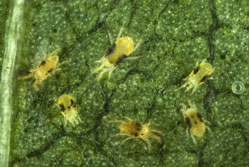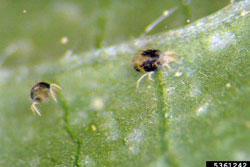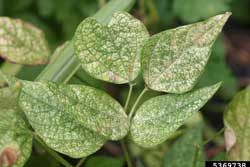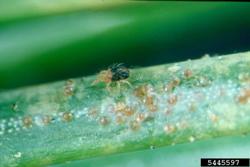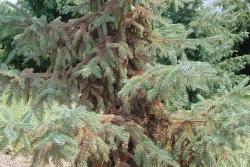Spider Mites
Spider mites (Family: Tetranychidae) are classed as a type of arachnid, relatives of insects that also includes spiders, ticks, daddy-longlegs and scorpions. They have four pairs of legs, no antennae and a single, oval body region. There are many species of spider mites; most have the ability to produce a fine silk webbing.
Spider mites are common pest problems on many plants in yards and gardens. Injury is caused as they feed, bruising the cells with their small, whiplike mouthparts and ingesting the sap. They frequently kill plants or cause serious stress to them.
Spider mites have tiny mouthparts modified for piercing individual plant cells and removing the contents. This results in tiny yellow or white speckles. When many of these feeding spots occur near each other, the foliage takes on a yellow or bronzed cast. Once the foliage of a plant becomes bronzed, it often drops prematurely.
Broad-spectrum insecticide treatments for other pests frequently cause mite outbreaks, so, if applying any pesticides, avoid these when possible.
Click on images to view full-size
Identification and Control Information
- Sucking Insects That Affect Vegetable Plants—University of Maine Cooperative Extension
- Integrated Pest Management in the Home Garden: Spider Mites (PDF)—University of California
- Fact Sheet: Spider Mites (PDF)—Virginia Cooperative Extension
- Fact Sheet: Spider Mites (PDF)—University of California Cooperative Extension
- Spider Mites—University of Connecticut
- Sider Mites in the Landscape and Nursery—UMassAmherst
- Spruce Spider Mites (PDF)—University Minnesota
- Rose Insects & Related Pests (PDF)—Clemson Cooperative Extension
- Using Home Remedies to Control Garden Pests (PDF)—Oregon State University Extension
- Spider Mites (of trees)—Maine Forest Service
[Photos, left to right: David Cappaert, Michigan State University, Bugwood.org; Frank Peairs, Colorado State University, Bugwood.org; Whitney Cranshaw, Colorado State University, Bugwood.org; Ward Strong, BC Ministry of Forests, Bugwood.org]
